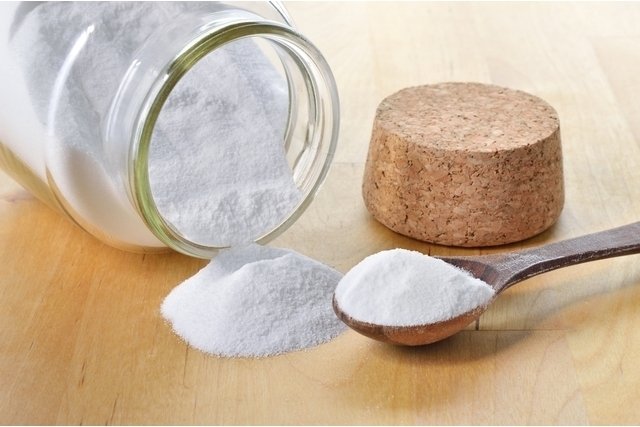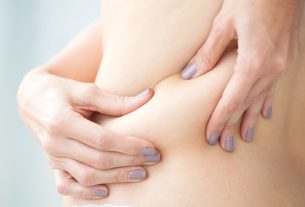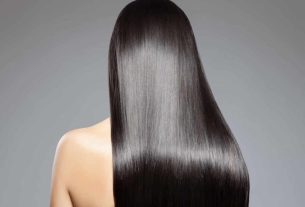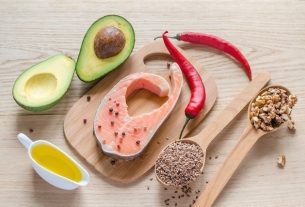Sodium bicarbonate is an alkaline substance that can be used to whiten teeth, combat stomach acidity, clear the throat, and assist in preparing and cleaning food.
Sodium bicarbonate works by promoting the reduction of alkalinity or acidity and, therefore, is a substance that can be used for various purposes in everyday life. However, when used incorrectly, it can cause damage to the skin, such as irritation or redness.
It is important that the doctor is consulted before starting to use sodium bicarbonate or if irritation or redness is noticed in the area where it is applied, as this means that the most appropriate amount of bicarbonate can be indicated for each person according to the goal.
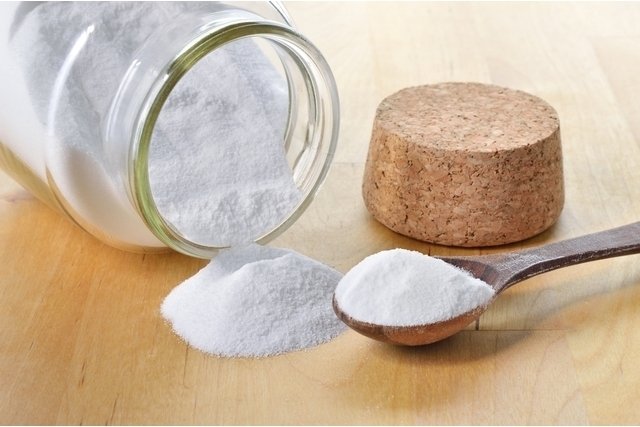
What is it for
Sodium bicarbonate can be found in supermarkets and natural stores and can be recommended for:
1. Whiten your teeth
The use of toothpastes that contain bicarbonate in their composition is a way to deeply clean teeth and gums, as it removes the yellowish color of stains present on tooth enamel and the bacterial plaque that tends to accumulate in places less reached by the brush. .
How to use: It is recommended to brush your teeth with bicarbonate paste 2 to 3 times a day.
2. Combat stomach acidity and reflux
Bicarbonate helps to minimize the effects of burning and pain that appear after eating and are caused by stomach acidity and reflux, as it helps to neutralize stomach acids.
How to use: To neutralize excess acidity and combat reflux, it is recommended to prepare a solution with 1 teaspoon of sodium bicarbonate with 250ml of water and drink at least half of the mixture to obtain the desired effect, acting directly to minimize the effects of burning and pain, especially after meals. Discover more home remedies to treat reflux.
3. Exfoliate and combat foot odor
The sodium bicarbonate exfoliant helps to eliminate dead cells present in the thickest and roughest regions of the foot, such as the heels and plantar region. Furthermore, bicarbonate is an excellent odor neutralizer due to its antifungal action.
How to use: To carry out the treatment, it is recommended to mix 1 teaspoon of bicarbonate in 2 tablespoons of liquid soap or sweet almond oil, and perform circular movements for 10 minutes and then wash with warm or cold water and dry with a soft towel. See other options for homemade body exfoliants.
4. Take a sitz bath against urinary infection
When symptoms of a urinary tract infection are present, such as urgency to urinate, pain and burning, it is possible to opt for a home treatment with sodium bicarbonate to alleviate the symptoms.
How to use: To treat urinary infections, fill a basin with 3 liters of water and add 3 tablespoons of baking soda until it dissolves completely. Then, you must remain sitting naked in this water for about 20 to 30 minutes, which can be repeated once a day.
It is possible to observe a significant improvement in symptoms after 4 days of treatment, however it is essential to follow some precautions, such as drinking 2 liters of water per day and carrying out correct hygiene of the intimate area, in addition to consulting a general practitioner to carry out an investigation. more in-depth of the picture. Check out other ways to combat urinary tract infections.
5. Remove dark spots on your skin
Dark spots on the skin appear due to an increased production of melanin in the skin, which is generally the result of certain factors, such as sun exposure, inflammatory processes or hormonal changes, for example.
How to use: To treat dark spots, you can make a homemade exfoliant by mixing 1 tablespoon of baking soda with 3 tablespoons of sweet almond oil or coconut oil, until you obtain a homogeneous mixture. Then, make circular movements in the area you want to treat for 10 minutes and wash with warm water until any residue is eliminated.
6. Deeply wash your hair
The small bicarbonate granules can act as an exfoliant, being useful for eliminating excess hair oil, seborrheic dandruff and also being useful for opening the hair cuticles, facilitating the absorption of active ingredients present in moisturizing creams and masks, such as hair sealing. .
How to use: To wash your hair, it is recommended to mix one or two tablespoons of baking soda with a little water until it forms a paste. Then, apply it to the scalp and hair, leave it on for 15 minutes and rinse. Then wash your hair with the shampoo you normally use.
7. Whiten your nails
Sodium bicarbonate is capable of eliminating the yellow color of your nails, as well as strengthening their growth.
How to use: To carry out the treatment, it is recommended to mix 1 teaspoon of baking soda with half a squeezed lemon. Then, rub this mixture into each nail, with the help of gauze or cotton, and leave it to act for 5 minutes. Finally, wash your nails with running water and apply sunscreen to your hands to avoid stains and burns on your skin.
8. Exfoliate your skin before waxing
The elimination of dead cells, present in the first layer of the skin, helps the penetration of natural active ingredients and helps eliminate hair more efficiently and less painfully.
How to use: To exfoliate, it is recommended to mix 3 teaspoons of baking soda with water or coconut oil and perform light circular movements for 10 minutes, avoiding intense scrubbing, so as not to damage the skin. Then, wash the area you want to shave with warm or cold water and dry with a soft towel. The ideal is to exfoliate 1 day before waxing.
9. Gargle against itchy throat
An itchy throat can be caused by factors such as allergies, irritation or infection. In this case, bicarbonate can help eliminate microorganisms present in the region.
How to use: It is recommended to gargle, mixing 1 tablespoon of baking soda with half a glass of warm water and repeating the procedure 4 to 5 times.
10. Sanitize food
Sodium bicarbonate can help reduce or eliminate some viruses and bacteria that may be present in some foods and cause diseases such as hepatitis, cholera and salmonellosis, for example. Furthermore, bicarbonate helps to eliminate dirt and some pesticides from unpeeled fruits and vegetables and green leafy vegetables.
How to use: To sanitize food, you must soak the food in a container with 1 liter of water and 1 tablespoon of baking soda for about 15 minutes. Then wash with running water to eliminate residues before consuming.
Possible side effects
When baking soda is applied to the skin, it can cause redness and irritation in some people. Furthermore, if it is ingested in quantities greater than those recommended, the following side effects may occur:
- Headache;
- Muscle pain and spasms;
- Nausea and vomiting;
- Slower breathing;
- Nervousness or restlessness;
- Unpleasant taste in the mouth.
Furthermore, the use of sodium bicarbonate can also cause metabolic alkalosis, abdominal cramps, increased thirst and a greater urge to urinate.
It is recommended to stop using sodium bicarbonate and go to an emergency department if symptoms of a serious allergic reaction are noticed, such as difficulty breathing, feeling of a closed throat, itching, redness of the skin, hives or inflammation in the mouth, tongue or face.
When it is not indicated
The use of oral sodium bicarbonate is not recommended for people who have signs and symptoms suggestive of metabolic or respiratory alkalosis and people who have hypocalcemia. Furthermore, this substance can also interact with other medications, such as the antibiotics doxycycline, levofloxacin, minocycline and tetracycline, and with non-steroidal anti-inflammatory drugs (NSAIDs). Therefore, it is important that a doctor is consulted before starting to use bicarbonate.
Furthermore, the use of sodium bicarbonate should be avoided by people allergic to this substance, pregnant and breastfeeding women and children under 2 years of age, unless recommended by a doctor.

Sign up for our newsletter and stay up to date with exclusive news
that can transform your routine!
Warning: Undefined array key "title" in /home/storelat/public_html/wp-content/plugins/link-whisper-premium/templates/frontend/related-posts.php on line 12
Warning: Undefined array key "title_tag" in /home/storelat/public_html/wp-content/plugins/link-whisper-premium/templates/frontend/related-posts.php on line 13

